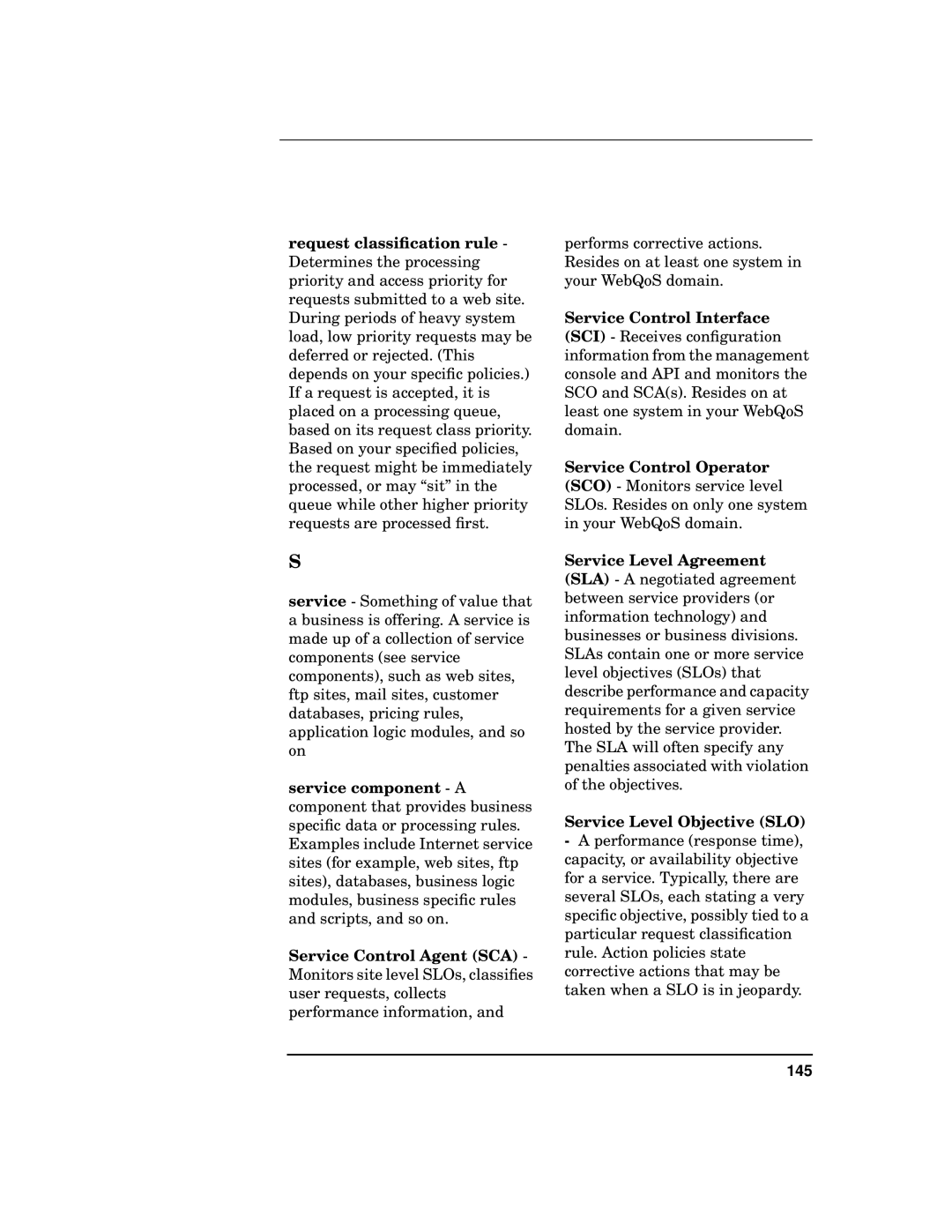
request classification rule - Determines the processing priority and access priority for requests submitted to a web site. During periods of heavy system load, low priority requests may be deferred or rejected. (This depends on your specific policies.) If a request is accepted, it is placed on a processing queue, based on its request class priority. Based on your specified policies, the request might be immediately processed, or may “sit” in the queue while other higher priority requests are processed first.
S
service - Something of value that a business is offering. A service is made up of a collection of service components (see service components), such as web sites, ftp sites, mail sites, customer databases, pricing rules, application logic modules, and so on
service component - A component that provides business specific data or processing rules. Examples include Internet service sites (for example, web sites, ftp sites), databases, business logic modules, business specific rules and scripts, and so on.
Service Control Agent (SCA) - Monitors site level SLOs, classifies user requests, collects performance information, and
performs corrective actions. Resides on at least one system in your WebQoS domain.
Service Control Interface (SCI) - Receives configuration information from the management console and API and monitors the SCO and SCA(s). Resides on at least one system in your WebQoS domain.
Service Control Operator (SCO) - Monitors service level SLOs. Resides on only one system in your WebQoS domain.
Service Level Agreement (SLA) - A negotiated agreement between service providers (or information technology) and businesses or business divisions. SLAs contain one or more service level objectives (SLOs) that describe performance and capacity requirements for a given service hosted by the service provider. The SLA will often specify any penalties associated with violation of the objectives.
Service Level Objective (SLO)
-A performance (response time), capacity, or availability objective for a service. Typically, there are several SLOs, each stating a very specific objective, possibly tied to a particular request classification rule. Action policies state corrective actions that may be taken when a SLO is in jeopardy.
